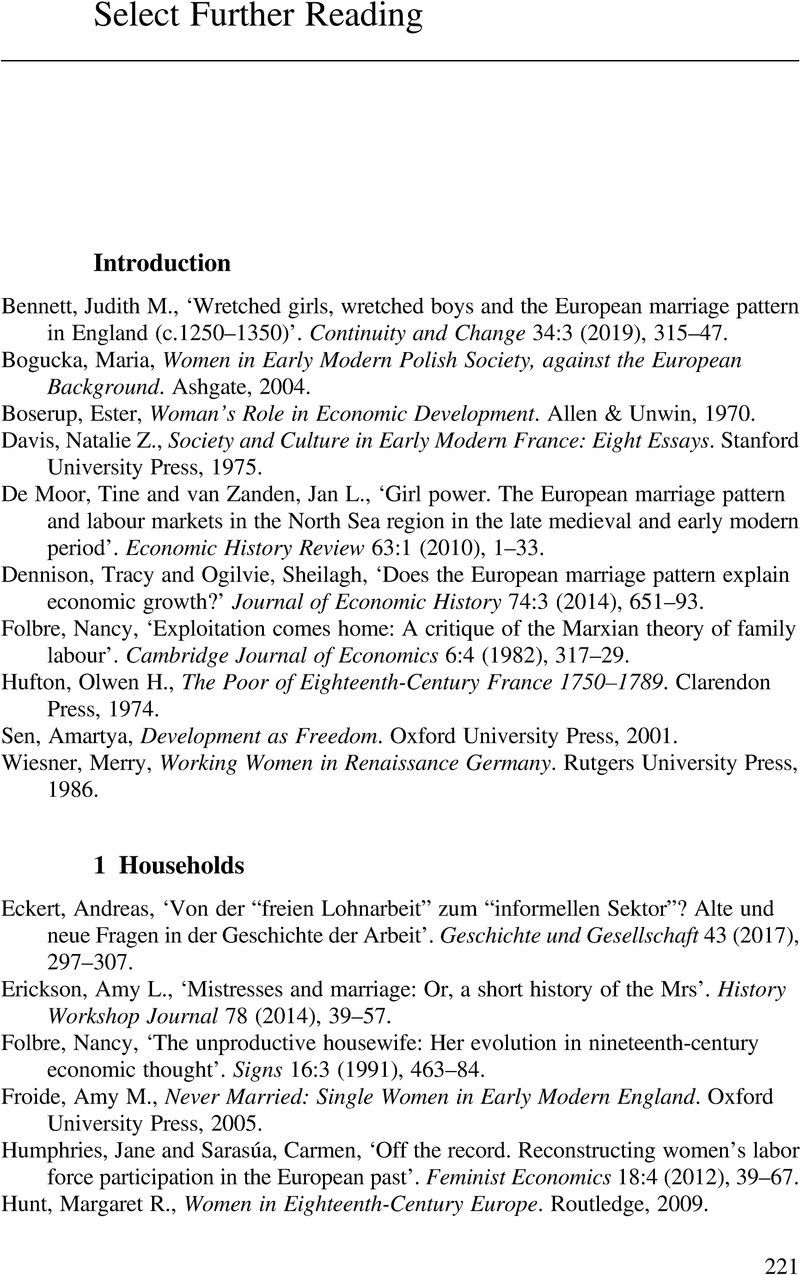Select Further Reading
Published online by Cambridge University Press: 09 June 2023
Summary

- Type
- Chapter
- Information
- The Whole EconomyWork and Gender in Early Modern Europe, pp. 221 - 225Publisher: Cambridge University PressPrint publication year: 2023

